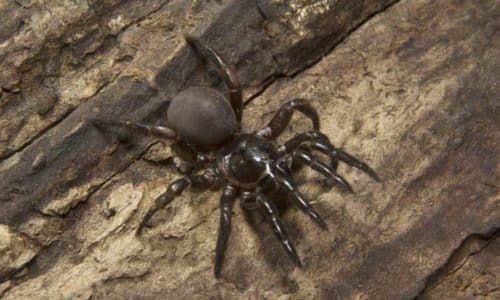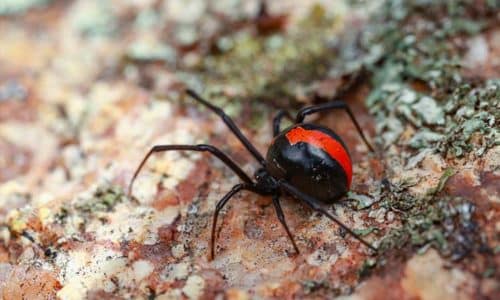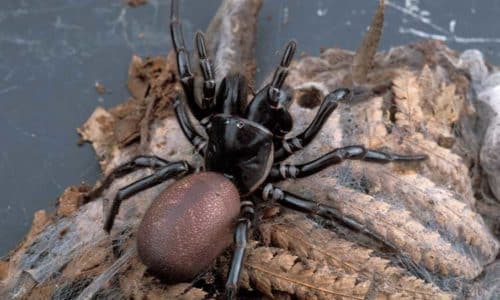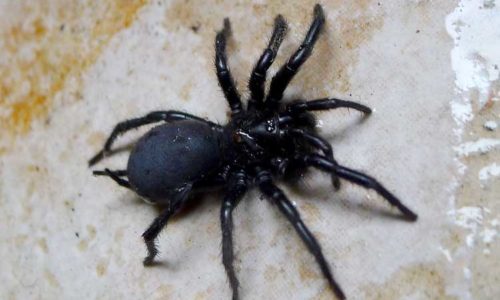Australia is renowned for its diverse wildlife, including some of the world’s most venomous spiders. While many species are harmless, a handful can pose serious health risks due to their potent venom and aggressive behaviour. Understanding how to identify these spiders, their habitats, and the risks they pose is crucial for staying safe.
Here’s an updated list for 2025 of the five most dangerous spiders in Australia and what to do if you encounter one.

5. Trapdoor Spider (Idiopidae Family)
- Identification: Medium-sized spiders, typically 1.5 to 3 cm in length, with dark brown bodies and sturdy legs.
- Habitat: Trapdoor spiders construct silk-lined burrows with camouflaged entrances, often in gardens, forests, or sandy soil.
- Risk: While their bites are rarely life-threatening, they can cause local pain, nausea, and mild lethargy. Male trapdoor spiders are more aggressive when provoked.
- First Aid: Wash the bite area with soap and water and monitor for any allergic reactions. Seek medical advice if symptoms worsen.

4. Mouse Spider (Missulena Species)
- Identification: Stocky spiders with shiny black or dark brown bodies. Some species feature distinctive red or orange heads.
- Habitat: Commonly found near waterways, Mouse spiders create burrows with trapdoor entrances.
- Risk: Similar to funnel-web spiders, their venom can be highly toxic. Fortunately, anti-venom is available for severe bites.
- First Aid: Apply a pressure immobilization bandage and seek immediate medical attention.

3. Redback Spider (Latrodectus Hasselti)
- Identification: Glossy black bodies with a prominent red stripe on the female’s back. Females are about 1 cm in size, while males are much smaller.
- Habitat: Found across Australia, particularly in sheds, gardens, and outdoor furniture.
- Risk: Redback venom causes intense pain, swelling, and systemic symptoms like nausea and sweating. Bites can be severe but are rarely fatal due to the availability of antivenom.
- First Aid: Keep the bite area still and seek medical attention. Avoid applying a pressure bandage, as it can worsen symptoms.

2. Funnel-Web Spiders (Atrax and Hadronyche Species)
- Identification: Funnel-web spiders have glossy black or dark brown bodies, with prominent fangs and spiny legs.
- Habitat: Approximately 40 species are found in moist environments like gardens and forests.
- Risk: Only six species pose a severe threat to humans. Their venom can cause life-threatening symptoms, including difficulty breathing and muscle spasms.
- First Aid: Apply a pressure immobilization bandage and seek emergency medical assistance.

1. Sydney Funnel-Web Spider (Atrax Robustus)
- Identification: Large spiders up to 5 cm in length, with a shiny black body and menacing fangs.
- Habitat: Found primarily in New South Wales, often in sheltered, moist areas such as gardens or wood piles.
- Risk: Male Sydney funnel-web spiders are particularly dangerous, with venom that can be lethal. Symptoms include severe pain, muscle twitching, and difficulty breathing.
- First Aid: Immediately apply a pressure bandage and seek urgent medical attention. Antivenom is highly effective when administered promptly.
First Aid for Spider Bites
When bitten by any spider, take these steps:
- Stay Calm: Keep the affected area still to prevent venom spread.
- Clean the Bite: Use soap and water to gently clean the area.
- Apply Pressure Immobilization: For funnel-web and mouse spiders, wrap the area firmly with a bandage.
- Seek Medical Help: Always consult a medical professional, even if symptoms appear mild.
Preventing Encounters with Dangerous Spiders
- Inspect and Maintain: Regularly check sheds, gardens, and outdoor furniture for webs or burrows.
- Seal Entry Points: Close gaps in walls, doors, and windows to prevent spiders from entering your home.
- Declutter: Reduce hiding spots by keeping your home and yard tidy.
- Call a Professional: Schedule regular pest inspections to keep your home spider-free.
Flick Pest Control: Your Partner in Spider Management
If you’re concerned about spider infestations, Flick Pest Control offers comprehensive solutions to protect your home. From preventive inspections to targeted treatments, our experts ensure a safe, pest-free environment for you and your family.
Contact Flick Pest Control today to learn more about our spider management services and enjoy peace of mind in 2025!
Enjoyed this article?
If you found this article helpful, sign up for our free Quarterly Newsletter to receive all our tips and tricks on pest control and washroom hygiene.
Sign Me Up!